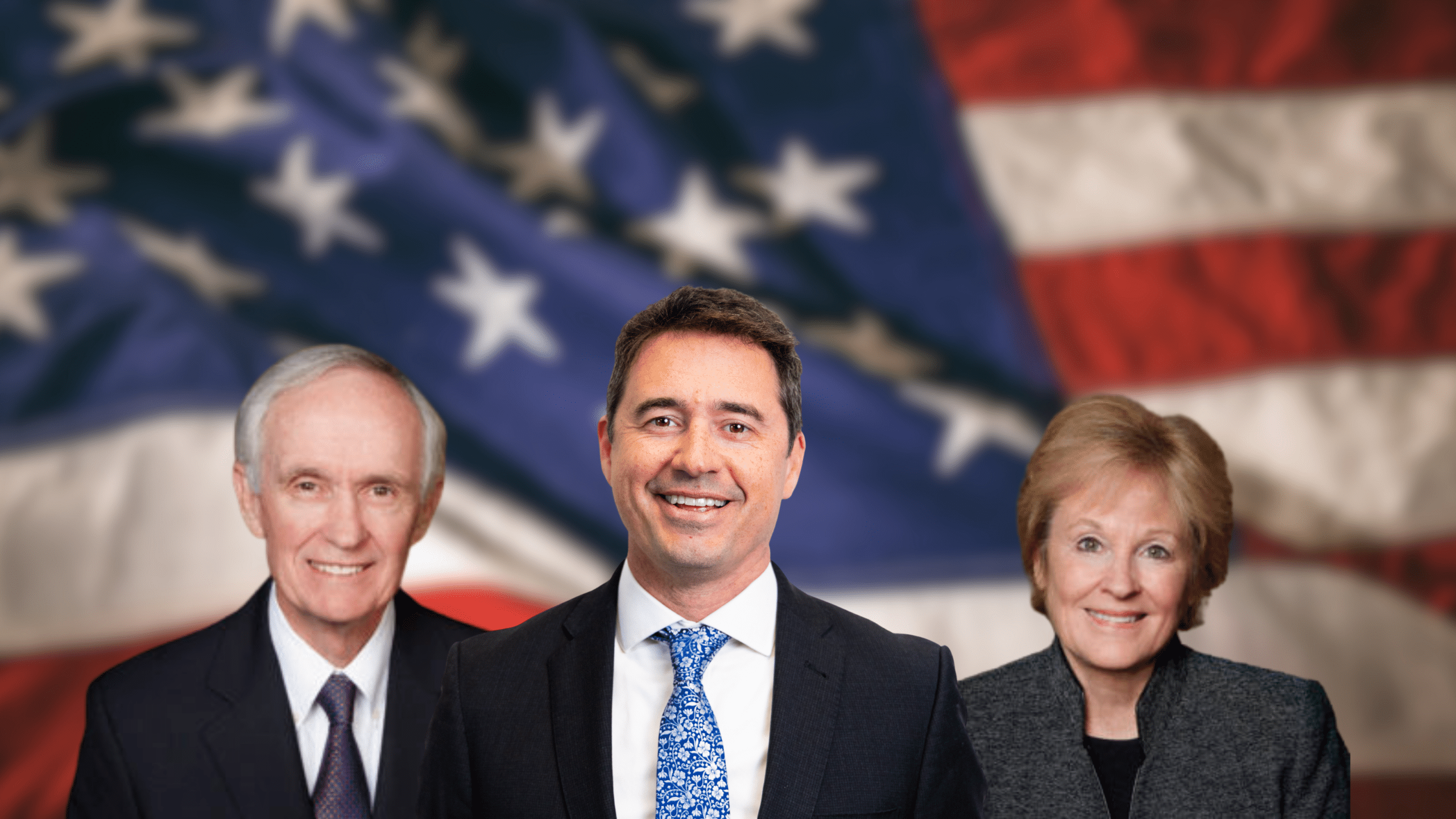The invasion of the small Caribbean island of Grenada by the Unites States on October 25, 1983 was key to the implementation of the Goldwater-Nichols Department of Defense Reorganization Act of 1986. The Act would serve as a gateway towards much needed improvement to unify the branches of the military.
The primary focus of the Grenada invasion was to overthrow the communist government in favor of a pro-Western one. The invasion was preceded by political unrest between the government of moderate, pro-Marxist Prime Minister Maurice Bishop and high-ranking members of the New Jewel Movement (NJM) – a pro-communist party, and the People’s Revolutionary Government. A military coup led to the execution of Bishop, creating a breakdown in civil order. Some 650 American medical students were caught living in Grenada at the time of the political unrest.
In a public appearance the morning of October 25th, in the White House pressroom, with Eugenia Charles, the Prime Minister of Dominica by his side, President Reagan said the primary purpose of the invasion was to rescue the American medical students and to restore democracy for the island of Grenada. He added that the U.S. had acted at the request of the Organization of Eastern Caribbean States headed by Mrs. Charles.
However, in the midst of the Cold War, Reagan was known to have been concerned about Grenada for some time. Particularly worrying was the presence of Cuban construction workers and military personnel who were building a 10,000-foot airstrip on Grenada. The Bishop government began constructing the Point Salines International Airport with the help of Britain, Cuba, Libya, Algeria and other nations. Bishop had stated the purpose of the airstrip was to allow commercial jets to land and to increase tourism to the island. However, U.S. military analysts argued that the only reason for constructing such a long and reinforced runway was so that it could be used by heavy military transport planes.
Reagan’s warnings that the construction of the facilities were to aid a Soviet-Cuban military build-up in the Caribbean and that the airstrip would be used as a refueling stop for Cuban and Soviet airplanes loaded with weapons destined for Central American communist insurgents began earlier that year in March of 1983.
Despite opposition of invasion by the United Kingdom, Trinidad and Tobago, and Canada, among others, in October of 1983, the U.S. launched “Operation Urgent Fury,” sending the Marines to the north of the island and Army Rangers to the south. Some eight-thousand combined forces were organized, including the U.S. Army’s Rapid Deployment Force (1st, 2nd Ranger Battalions and 82nd Airborne Division Paratroopers), Marines, Army Delta Force, Special Operations Forces, and Navy SEALS, in addition to the Regional Security System troops from a variety of Caribbean partner nations. The invading forces encountered about 1,500 Grenadian soldiers and about 700 Cubans, which included the workers, police and secret service types. Also present were 60 advisors from the Soviet Union, North Korea, East Germany, Bulgaria, and Libya.
Official U.S. sources state that some of the defenders were well-prepared, well-positioned and put up stubborn resistance, to the extent that the U.S. called in two battalions of reinforcements on the second evening of the invasion.
During the fighting, the U.S. suffered from lack of sufficient intelligence data, which made it difficult to find the medical students who needed to be rescued. The American medical students at the True Blue Medical Facility were the first to be evacuated by aircraft. But it was not known that the students were actually at two different campuses and there was a thirty-hour delay in reaching the students at the Grand Anse campus who were trapped inside a wall of resistance army soldiers and Cubans. It has been reported that the troops were provided with tourist maps that had no information of terrain or distance. There were also a lot of communication issues involving radio signals that were being controlled by Cuban radiofrequencies.
The operation in Grenada was the beginning of the steppingstones that would lead to better inter-operation and cooperation of the branches of the military to accomplish the overall mission from the Unites States high command. U.S. Congressional investigations of many of the reported problems during the Grenada invasion resulted in legislative change and implementation of the Goldwater-Nichols Department of Defense Reorganization Act of 1986. The Act increased the powers of the Chairman of the Joint Chiefs of Staff and created the concept of a truly unified-joint U.S. force.
Operation Urgent Fury was a success, but not without the inevitable tragedies of battle. By November 2nd, all military objectives had been secured. U.S. forces sustained 19 killed and 116 wounded; Cuban forces sustained 25 killed, 59 wounded and 638 combatants captured. Grenadian forces casualties were 45 killed and 358 wounded; at least 24 civilians were killed.
U.S. military personnel seized an arsenal of communist weapons, including Soviet-made AK-47s [7.62 mm Kalashnikov assault rifles] and rocket launchers, along with guns. Soviet anti-aircraft weapons, amphibious armored scout cars, and armored personnel carriers were among the equipment seized.
Following the U.S. victory, the operation was completed on December 15, 1983. An Interim Advisory Council was established and it governed Grenada until December 1984, when Herbert A. Blaize, the head of the New National Party, was elected Prime Minister. He remained as Prime Minister until his death in 1989.
Eighteen members of the People’s Revolutionary Government and the Grenadian army were arrested after the invasion on charges related to the murder of Maurice Bishop and seven others. Fourteen were sentenced to death, one was found not guilty and three were sentenced to forty-five years in prison. The death sentences were eventually commuted to terms of imprisonment. Those in prison have become known as the Grenada 17.
Grenadians post-war response was positive despite a heavy anti-American campaign by the New Jewel Movement. Their gratitude to the U.S. forces was expressed with more than words. They gave away fresh fruit, ice water and cases of soft drinks. At Pearls Airport, they cooked rice, meat and fruit for the Marines. The date of the invasion is now a national holiday in Grenada, called Thanksgiving Day, and the Point Salines International Airport was renamed in honor of Prime Minister Maurice Bishop.



